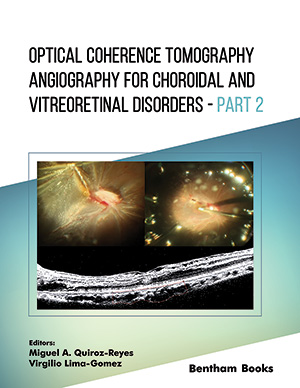Abstract
Objective: To evaluate the epidemiological profile and clinical findings of newly diagnosed HIV-infected patients in terms of changing trends over 16 years.
Methods: A total of 748 patients (mean ± SD age: 34 ± 11.6 years, 88.9% were males) newly diagnosed with HIV/AIDS at a tertiary care hospital located in Istanbul province between 2002 and 2017 were included in this retrospective study. Data on sociodemographic characteristics, potential routes of transmission, the reason for HIV testing, time from diagnosis to treatment onset, and the HIV RNA values and CD4+ T cell count (at diagnosis and treatment onset) were recorded in each patient and compared between the diagnoses made within the 2002-2009 (n = 141) vs. 2010-2017 (n = 607) periods.
Results: When compared to HIV diagnoses within the 2002-2009 period, the diagnoses made within the 2010-2017 period were associated with a significantly higher percentage of males (78.7 vs. 91.3%, p < 0.001), 18-29 years age group (23.6% vs. 35.5%, p = 0.029), singles (34.0 vs. 49.6%, p = 0.004), university graduates (9.9 vs. 23.4%, p < 0.001) and students (0.7 vs. 8.2%, p < 0.001) along with an increased likelihood of voluntary testing (6.4 vs. 15.2%, p = 0.048) and a lower percentage of heterosexual individuals (63.8 vs. 47.0%, p < 0.001). Sexual contact (88.0%) was the leading transmission route, and the presence of complaints (44.3%) was the leading reason for HIV testing. Overall, the time from diagnosis to treatment onset was a median 1 month (range, 1 to 97 months), and the median HIV RNA level at the time of diagnosis was 208065 copies/mL with no significant difference between study periods. The diagnoses within the 2010-2017 vs. 2002-2009 period were associated with significantly higher median (min-max) CD4+ T cell counts (378(0-2522) vs. 319(4-1270) cells/mm3, p < 0.001) and a lower percentage of patients with CD4+ T cell count < 200 cells/mm3 (22.1 vs. 39.0%, p = 0.002) at the time of diagnosis.
Conclusion: In conclusion, our findings on the epidemiological profile and clinical characteristics of newly diagnosed HIV patients over 16 years (2002-2017) in a tertiary care center in Turkey revealed a considerable increase in the number of new diagnoses, an improved earlier diagnosis and a change in epidemiologic profile over the years with increased likelihood of disease to be more commonly diagnosed among males, 18-29 years age group and MSM.
Keywords: HIV/AIDS, new diagnosis, epidemiological profile, clinical characteristics, early diagnosis, younger age, males.
[http://dx.doi.org/10.1016/S2055-6640(20)30459-3] [PMID: 27482455]
[http://dx.doi.org/10.2174/1570162X12666140411111803] [PMID: 24725060]
[http://dx.doi.org/10.5578/mb.10610] [PMID: 27058333]
[http://dx.doi.org/10.5152/eurasianjmed.2016.15203] [PMID: 28149137]
[http://dx.doi.org/10.2174/1570162X18666200427223823] [PMID: 32342820]
[http://dx.doi.org/10.1016/S2352-3018(19)30196-1] [PMID: 31439534]
[http://dx.doi.org/10.1016/S2352-3018(17)30066-8] [PMID: 28501495]
[http://dx.doi.org/10.1186/s12889-021-10196-y] [PMID: 33478434]
[http://dx.doi.org/10.1177/2325958218759602] [PMID: 29534654]
[http://dx.doi.org/10.1186/s12879-021-06706-3] [PMID: 34565337]
[http://dx.doi.org/10.1177/1545109707306575] [PMID: 17989428]
[http://dx.doi.org/10.7448/IAS.17.4.19595] [PMID: 25394100]
[http://dx.doi.org/10.1136/sextrans-2015-052042] [PMID: 26136507]
[http://dx.doi.org/10.1038/s41598-019-51688-7] [PMID: 31641252]
[http://dx.doi.org/10.1097/01.aids.0000432449.30239.fe] [PMID: 23842129]
[http://dx.doi.org/10.1017/S0950268818003400] [PMID: 30869019]
[http://dx.doi.org/10.1089/aid.2014.0139] [PMID: 25366819]
[http://dx.doi.org/10.1089/aid.2015.0064] [PMID: 25962473]
[http://dx.doi.org/10.1177/0956462414543841] [PMID: 25033880]
[http://dx.doi.org/10.14745/ccdr.v45i12a01] [PMID: 32167090]
[http://dx.doi.org/10.1016/j.socscimed.2015.03.048] [PMID: 25840048]
[http://dx.doi.org/10.1310/hct1202-104] [PMID: 21498153]
[http://dx.doi.org/10.1089/apc.2006.0045] [PMID: 17328662]
[http://dx.doi.org/10.1080/09540120500373844] [PMID: 16971286]
[http://dx.doi.org/10.5152/eajm.2012.07] [PMID: 25610202]
[http://dx.doi.org/10.1016/S0140-6736(08)61697-9] [PMID: 19038438]
[http://dx.doi.org/10.1007/s10461-019-02541-5] [PMID: 31161462]
[http://dx.doi.org/10.24875/AIDSRev.M19000027] [PMID: 31332395]
[http://dx.doi.org/10.1111/hiv.12708] [PMID: 30724450]
[http://dx.doi.org/10.1001/jama.2016.5148] [PMID: 27404185]
[http://dx.doi.org/10.1016/S0140-6736(19)30418-0] [PMID: 31056293]
[http://dx.doi.org/10.7448/IAS.17.4.19678] [PMID: 25397428]




























